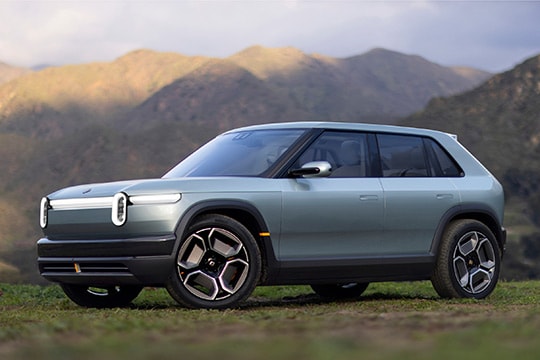Body style: SUV (Sports Utility Vehicle)
Segment: Medium SUV
Production years: 2024
 10 Photos
10 PhotosRivian introduced the R3 as a shorter and sportier-looking alternative to the R2 in March 2024, and the new vehicle was ready to hit the market in early 2026.
The American EV manufacturer worked intensively to develop a new platform and created the R2, the R3, and the R3X models on it. Even though these followed the same basic idea of a skateboard-styled chassis that integrated the battery pack and the motors, it didn’t allow a quad-motor solution like the R1 versions.
From an aesthetic point of view, the R3 shared its front fascia with the R2. It had the same design language introduced by Rivian on the R1S and R1T. It featured a horizontal LED lightbar that crossed the vehicle’s front from side to side, interrupted only by the headlights with their oval-shaped DRLs. Lower, integrated into the bumper, the American car manufacturer created an air intake that cooled the electronics. Unlike its R2 brother, the R3 didn’t have the tow hooks at the front, suggesting it was not built for more serious off-road sessions.
Rivian tried to create a visual connection between the R3 and the rest of its stablemates. As a result, the crossover had a flat hood that concealed a frunk, just like its siblings. It also featured a raked windshield that provided great visibility for the driver. However, unlike the R1T, R1S, or R2, the R3 was created with a raked-forward tailgate at the back, with a roof spoiler mounted on top of it. It also featured an independent rear window opening that allowed customers to load long items such as a surfboard. But still, Rivian’s design department created black moldings that adorned the wheel arches on both axles and the same color side sills. Even though the R3 didn’t have the same ground clearance as its R2 brother, it could still travel easily on unpaved and uneven roads.
Inside, Rivian installed a flat dashboard that featured two screens: one for the instrument panel fronting the driver and a touchscreen in the middle for the infotainment system. The steering wheel featured two rollers with haptic feedback installed on the horizontal spokes that allowed the driver to control the infotainment system. Furthermore, the same rollers could be used to program the adaptive cruise control and show various information on the instrument panel’s display. Under the dashboard, Rivian installed two glove boxes that could be opened independently. Between the front seats, the R3 featured a tall center console with storage compartments and cup holders. Behind, on the split-folding (40/20/40) rear bench, there was enough room for three adults, albeit legroom was not as generous as in the R2. Finally, all the seats could be folded down flat, allowing customers to sleep in their vehicles if they wished. Furthermore, they could do star gazing through the panoramic glass roof.
Under its skin, the R3 was available with a choice of three drivetrains. The base model was powered by a single motor on the rear axle. The mid-grade featured a dual-motor setup with one driving each axle. Finally, the most potent version had one motor for the front wheels and two for the rear ones, helping the car get supercar-like acceleration times. Its shorter wheelbase and length, compared to the R2, made the R3 a desirable choice for urban use, and it could still perform well on long travels.
RIVIAN R3 2024
Information about this model's engines has not been yet made public, but we will add it as soon as the car is launched or more data becomes available









